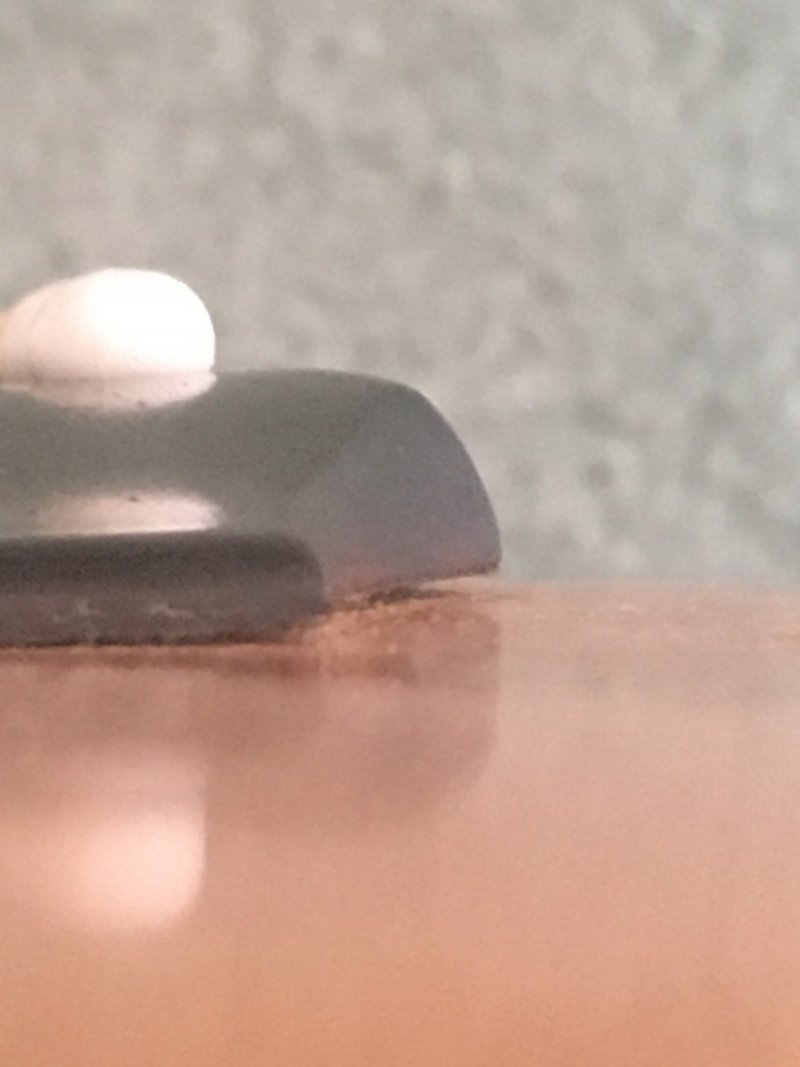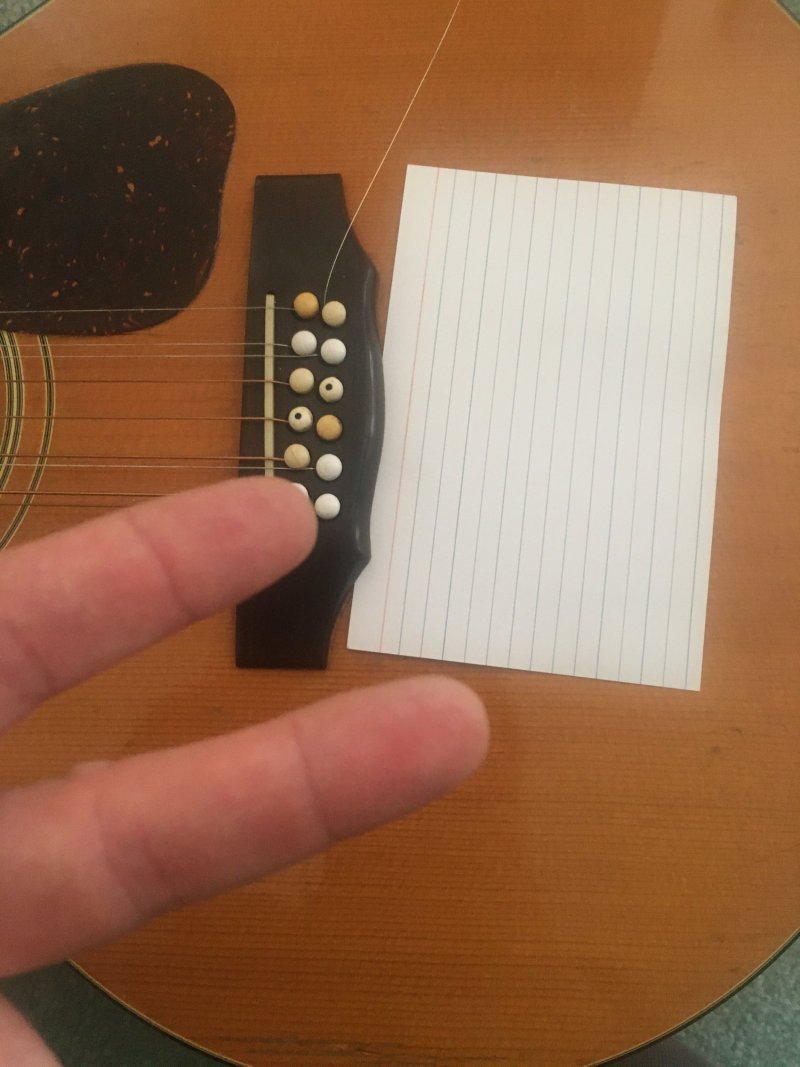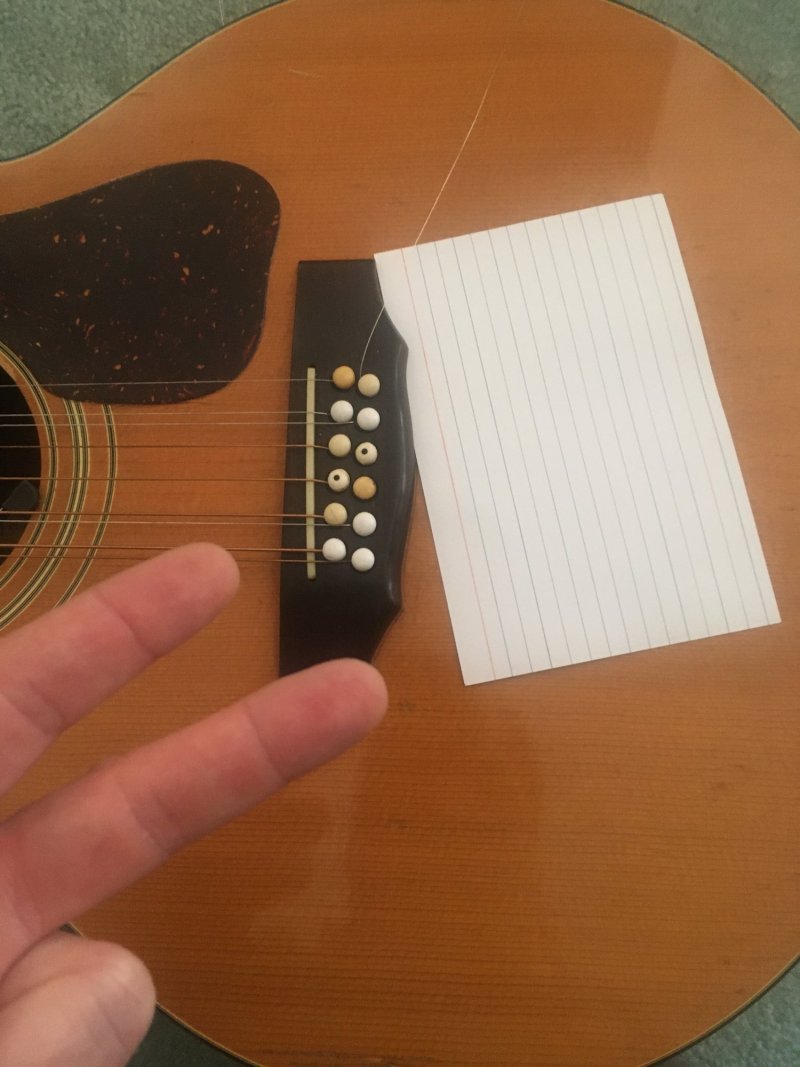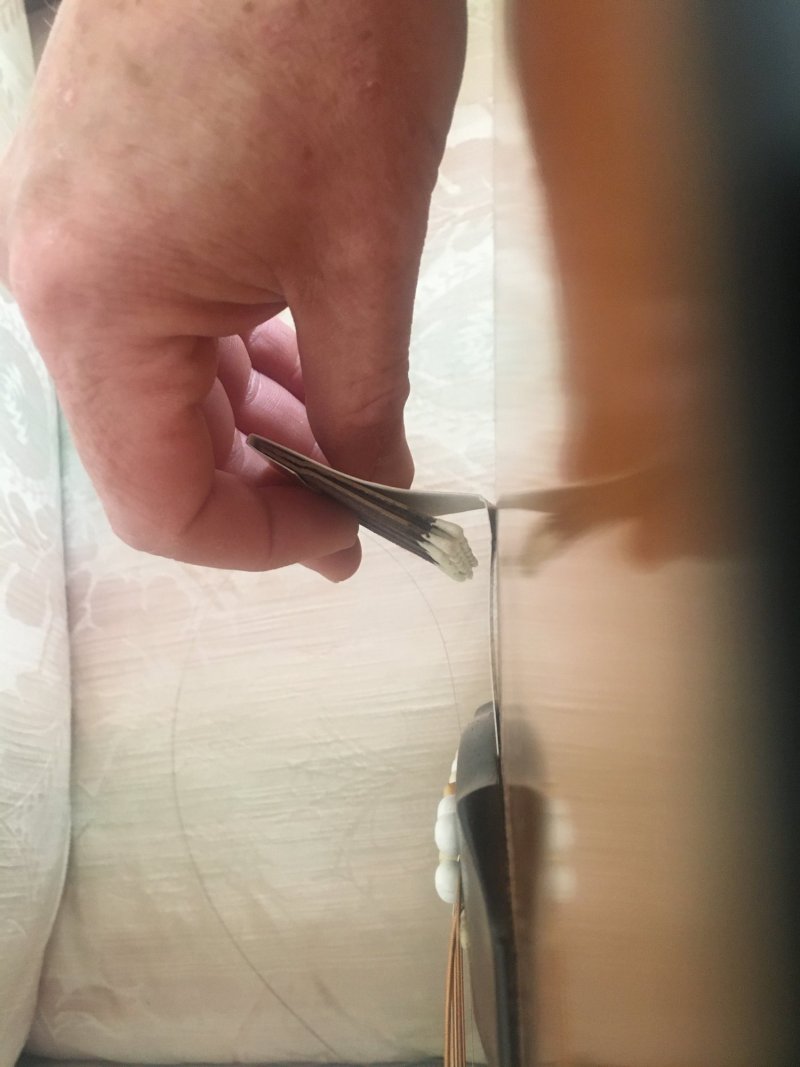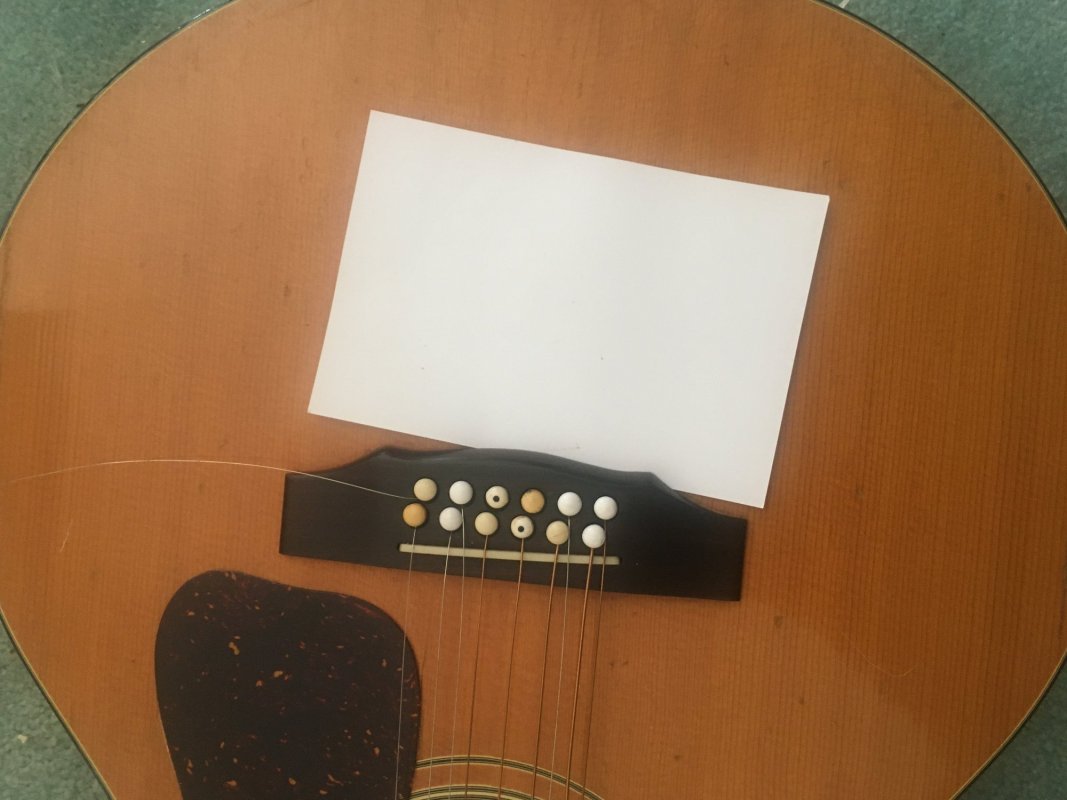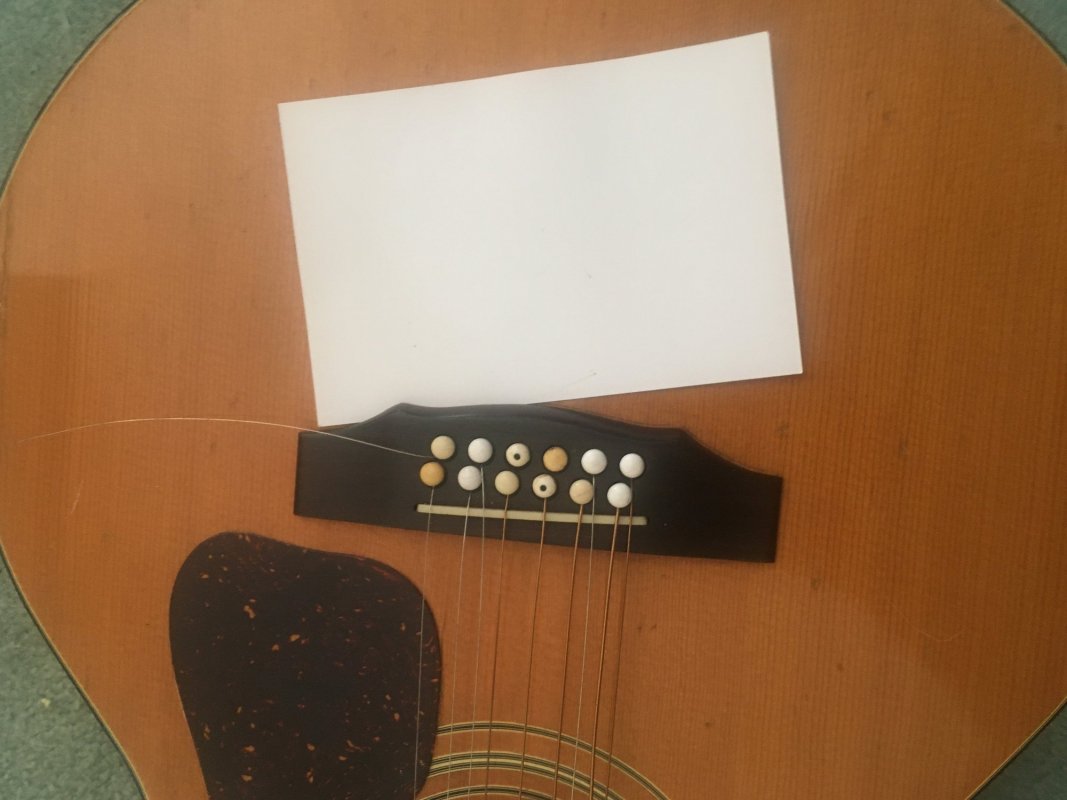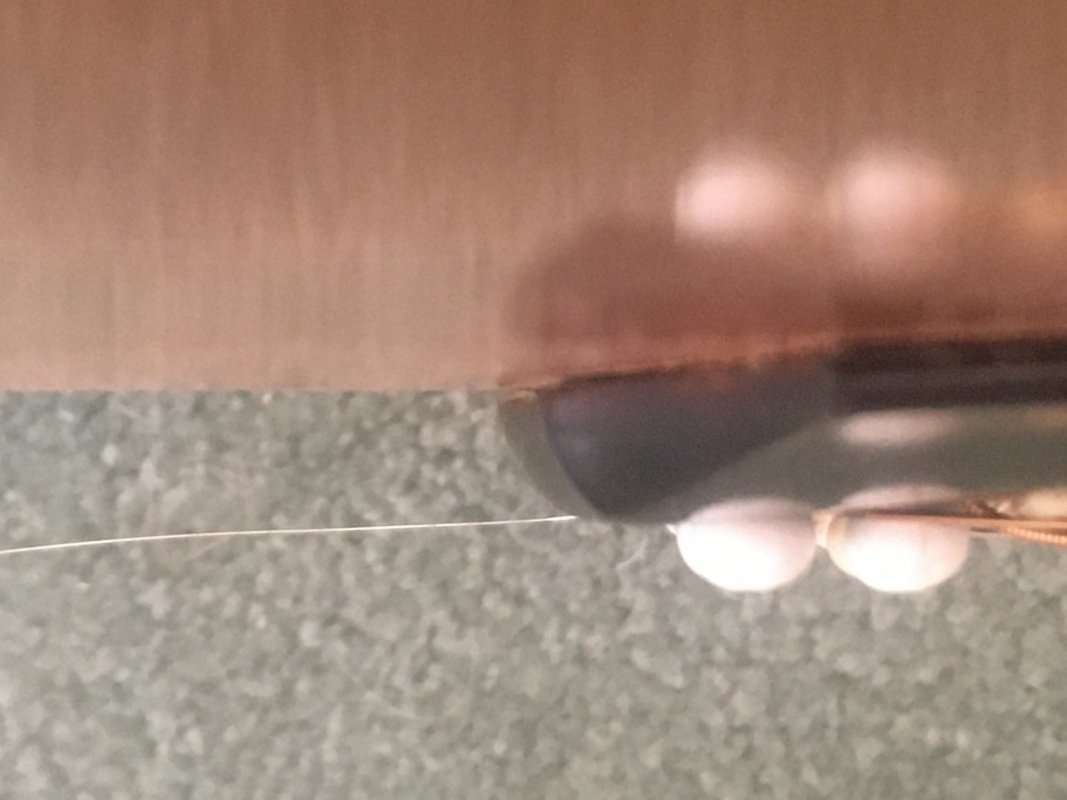So, I bought this little guy a couple months ago:
Guild F112
There were like 50 watchers and I was the only bidder. Hmmm...
It was clear from the photos that it's a player, and would need some work. The seller assured me that it had never been worked on, and that was the deal clincher. Action was super high and neck was bowed on receipt. My fear was a neck re-set, but the neck straightened out with a significant turn of the truss rods (about 3/4 of the way around for both). Straight as an arrow now and actually plays and sounds great.
Problem is, bridge is lifting. Not uncommon, and not a dealbreaker at this price point ($550), but I'd like to fix it to keep it going for the long haul. Thing is, everyone says hide glue, because that's what they used back then... But no one uses hide glue anywhere near me. We used to have a real good luthier in town but life changes have made his time scarce. The guy in GC laughed when I asked if he used hide glue, adding, "they probably didn't use it anyway." Another I talked to today (more of an electronics/amp place) told me he stopped using it years ago.
I've seen on this forum there's a guy in Connecticut who worked at Westerly, I could probably get to him in six months and it'd take him a couple more months, etc... We're talking about a $500 guitar here.
So, I'm considering DIY. But I've never used hide glue, and everyone in my area I've asked said they don't or won't use it. I hear it's a real PITA to use... I get it, it takes time to heat, it sets super fast (as it cools, it's setting and hardening, is what I've been told). But the thing is, this guitar has never been worked on in 45 years, which means, it's all hide glue, and I'd almost feel bad letting someone use anything else (ok, maybe that's silly, but...).
I've watched a couple YT videos (there are only a few), but I know that doesn't mean I can DO it, and there might be things left out of the videos (you know, like grandma's recipe where she always left out something -- a pinch of salt or a teaspoon of baking soda -- just to make sure no one else in the family could get it right).
So, we're looking at a player-grade guitar here (a really nice sounding and feeling one), at a low cost. Not investment grade. and will never be investment grade. And I'd like to keep it a player-grade guitar and not a parts guitar for as long as I can.
Should I go the hide glue route just because that's what they used back then, and to make it easier for future repairs if needed? Or have someone else do this and let them convince me of the merits of wood glue/tite-bond/krazy glue/epoxy alternative or whatever they prefer to use?
OTOH, if I'm going the hide glue route, it's almost certainly DIY (because no one near me uses it), so what suggestions/help/pointers can you give me, beyond what is available on YT?
Guild F112
There were like 50 watchers and I was the only bidder. Hmmm...
It was clear from the photos that it's a player, and would need some work. The seller assured me that it had never been worked on, and that was the deal clincher. Action was super high and neck was bowed on receipt. My fear was a neck re-set, but the neck straightened out with a significant turn of the truss rods (about 3/4 of the way around for both). Straight as an arrow now and actually plays and sounds great.
Problem is, bridge is lifting. Not uncommon, and not a dealbreaker at this price point ($550), but I'd like to fix it to keep it going for the long haul. Thing is, everyone says hide glue, because that's what they used back then... But no one uses hide glue anywhere near me. We used to have a real good luthier in town but life changes have made his time scarce. The guy in GC laughed when I asked if he used hide glue, adding, "they probably didn't use it anyway." Another I talked to today (more of an electronics/amp place) told me he stopped using it years ago.
I've seen on this forum there's a guy in Connecticut who worked at Westerly, I could probably get to him in six months and it'd take him a couple more months, etc... We're talking about a $500 guitar here.
So, I'm considering DIY. But I've never used hide glue, and everyone in my area I've asked said they don't or won't use it. I hear it's a real PITA to use... I get it, it takes time to heat, it sets super fast (as it cools, it's setting and hardening, is what I've been told). But the thing is, this guitar has never been worked on in 45 years, which means, it's all hide glue, and I'd almost feel bad letting someone use anything else (ok, maybe that's silly, but...).
I've watched a couple YT videos (there are only a few), but I know that doesn't mean I can DO it, and there might be things left out of the videos (you know, like grandma's recipe where she always left out something -- a pinch of salt or a teaspoon of baking soda -- just to make sure no one else in the family could get it right).
So, we're looking at a player-grade guitar here (a really nice sounding and feeling one), at a low cost. Not investment grade. and will never be investment grade. And I'd like to keep it a player-grade guitar and not a parts guitar for as long as I can.
Should I go the hide glue route just because that's what they used back then, and to make it easier for future repairs if needed? Or have someone else do this and let them convince me of the merits of wood glue/tite-bond/krazy glue/epoxy alternative or whatever they prefer to use?
OTOH, if I'm going the hide glue route, it's almost certainly DIY (because no one near me uses it), so what suggestions/help/pointers can you give me, beyond what is available on YT?
Last edited:
